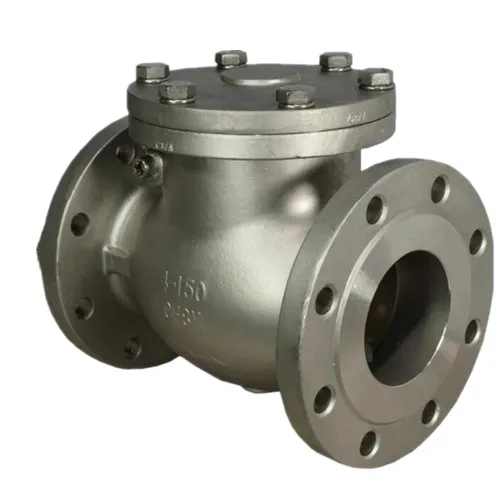Mobile:+86-311-808-126-83
Email:info@ydcastings.com
aluminum motor housing
The Importance of Aluminum in Motor Housing A Comprehensive Overview
In the ever-evolving landscape of engineering and manufacturing, materials play a pivotal role in determining the performance, durability, and efficiency of products. One material that has gained significant attention, particularly in the automotive and aerospace industries, is aluminum. Specifically, aluminum motor housings have emerged as a crucial component in the design and production of modern electric and internal combustion engines. This article will explore the benefits, applications, and future potential of aluminum motor housings.
Why Aluminum?
Aluminum, with its lightweight nature and excellent strength-to-weight ratio, is an ideal choice for motor housing. Reducing the weight of a motor housing directly contributes to the overall performance of the vehicle. Lighter engines can lead to improved fuel efficiency, enhanced acceleration, and better handling characteristics, all of which are essential in today’s competitive automotive market.
In addition to weight savings, aluminum also offers superior thermal conductivity compared to traditional materials like steel. This quality is particularly beneficial for motor housings, which must dissipate heat effectively to prevent overheating and maintain optimal performance. The enhanced heat dissipation capability allows for better engine efficiency and increased longevity.
Corrosion Resistance and Aesthetic Appeal
Another significant advantage of aluminum is its inherent corrosion resistance. Unlike steel, which can rust when exposed to moisture and air, aluminum naturally forms a protective oxide layer when oxidized. This characteristic is crucial for motor housings, which are often subjected to harsh environmental conditions. By using aluminum, manufacturers can ensure that motor housings maintain their structural integrity over time, even when exposed to moisture, pollutants, and other corrosive agents.
Moreover, aluminum offers aesthetic appeal. Its ability to be polished, anodized, or painted allows manufacturers to enhance the visual aspect of motor housings, making them attractive to consumers and aligning with modern design principles that emphasize sleek and contemporary aesthetics. This characteristic is particularly important for electric vehicles (EVs) and high-end luxury cars, where appearance can significantly influence consumer choices.
aluminum motor housing

Sustainability and Environmental Impact
In today’s environmentally conscious world, the sustainability of materials is a significant consideration for manufacturers. Aluminum is 100% recyclable without any loss of properties, making it an environmentally friendly choice. The recycling process requires only a fraction of the energy needed to produce new aluminum, significantly reducing the carbon footprint associated with manufacturing. As the global push for sustainable practices continues, the demand for aluminum motor housings is expected to rise, reflecting a broader trend toward using environmentally friendly materials in automotive engineering.
Challenges and Future Directions
Despite its numerous benefits, manufacturing aluminum motor housings does come with challenges. The cost of aluminum can be higher compared to traditional materials, which might deter some manufacturers. Additionally, joining aluminum with other materials can present difficulties due to differences in thermal expansion coefficients and welding techniques. Advances in technologies such as hybrid manufacturing and enhanced welding processes are helping to mitigate these challenges, making aluminum an increasingly feasible option for various applications.
As the automotive sector continues to shift towards electrification, the demand for robust, lightweight, and efficient components will only grow. Motor housings made from aluminum are likely to become even more prevalent as manufacturers strive to improve performance while minimizing weight and maximizing efficiency. Innovations in aluminum alloys and treatments could further enhance the performance characteristics of motor housings, paving the way for advanced aerospace and automotive applications.
Conclusion
The transition to aluminum motor housings represents a significant evolution in engine design and manufacturing processes. With advantages such as reduced weight, enhanced thermal management, corrosion resistance, and sustainability, aluminum is undeniably a material that supports the future of automotive engineering. As industries strive for greater efficiency and lower environmental impact, the role of aluminum in motor housing is set to become even more critical, shaping the next generation of vehicles for a sustainable future.
-
Why Should You Invest in Superior Pump Castings for Your Equipment?NewsJun.09,2025
-
Unlock Performance Potential with Stainless Impellers and Aluminum End CapsNewsJun.09,2025
-
Revolutionize Your Machinery with Superior Cast Iron and Aluminum ComponentsNewsJun.09,2025
-
Revolutionize Fluid Dynamics with Premium Pump ComponentsNewsJun.09,2025
-
Optimizing Industrial Systems with Essential Valve ComponentsNewsJun.09,2025
-
Elevate Grid Efficiency with High-Precision Power CastingsNewsJun.09,2025











